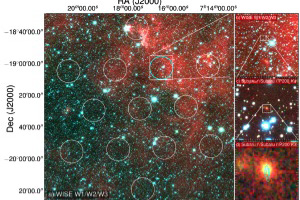When astronomers located and identified the source of a fast radio burst, or FRB, they became able to employ the distinctive characteristics of the signal measure the material lying between the object and Earth.
David Kaplan, an astronomer at UW-Milwaukee, is a member of the team that searched through data from other telescopes and also helped interpret the data to form a more comprehensive picture of this mysterious event.
“We’ve been able to locate the object and determine its distance – several billion light years away,” Kaplan said. “That’s important because the nature of the radio signals from FRBs indicate how much material they’ve gone through.

“Most of the gas in the universe isn’t in galaxies. Instead, it lies between them in the ‘intergalactic medium.’ Knowing the distance to this object lets us take a ‘census’ of the intergalactic medium in a way that hasn’t been possible before.”
Locating the object required an international alert system that brought several telescopes into play around the world. Prior to this discovery, the FRBs faded before their sources could precisely located.
Astronomers expect to begin finding many more of these objects, revealing both their true nature and employing them for further examination of the matter in the space between galaxies, where the vast majority of the matter in the universe resides.
The team’s work was published in the Feb. 25, 2016, issue of Nature.



